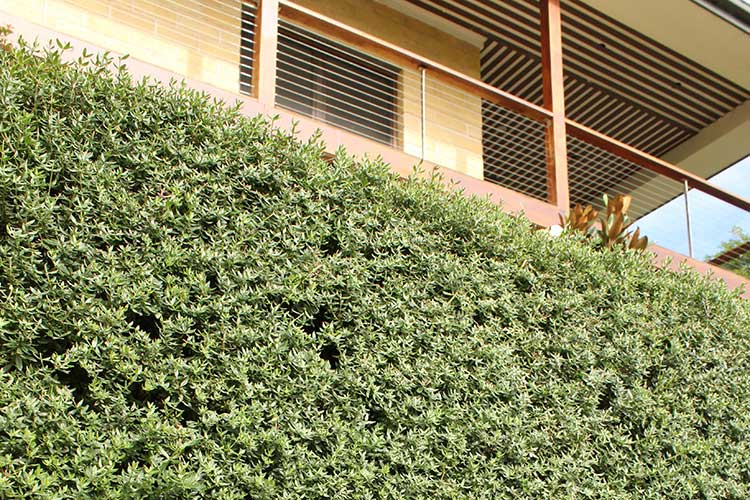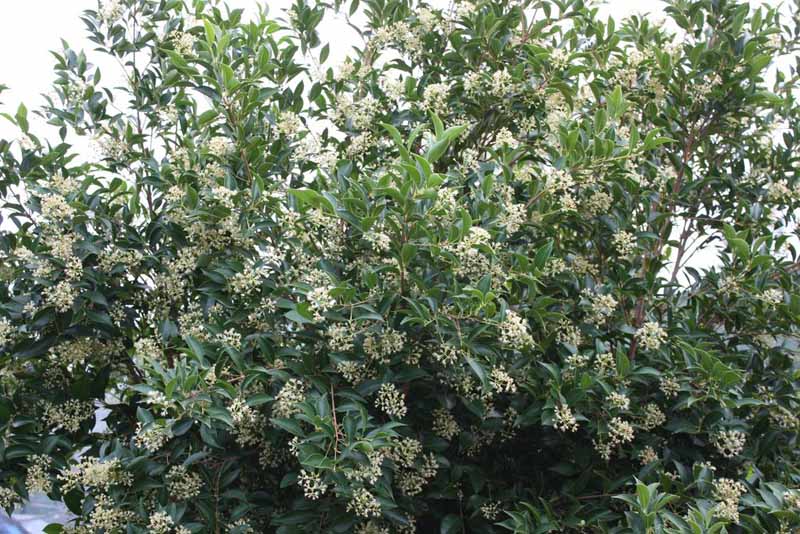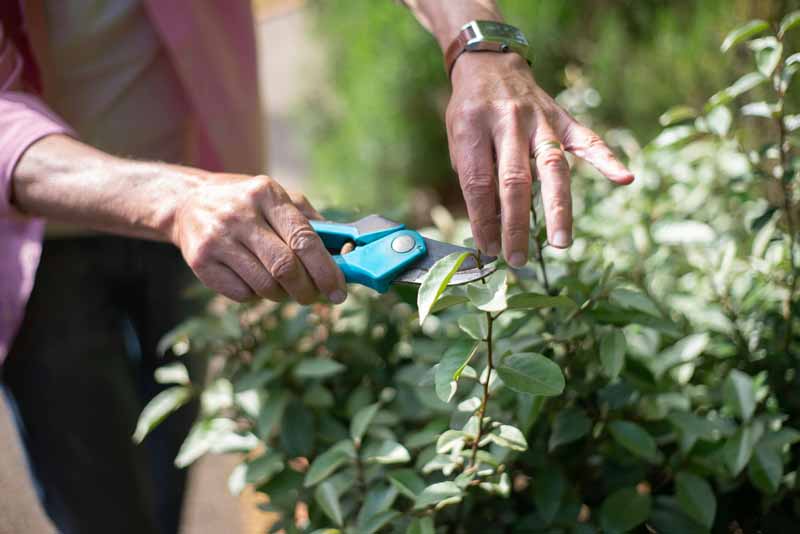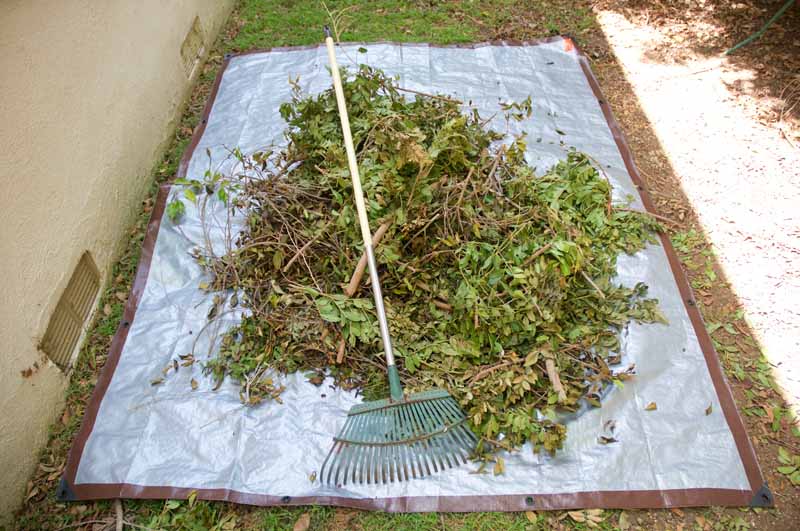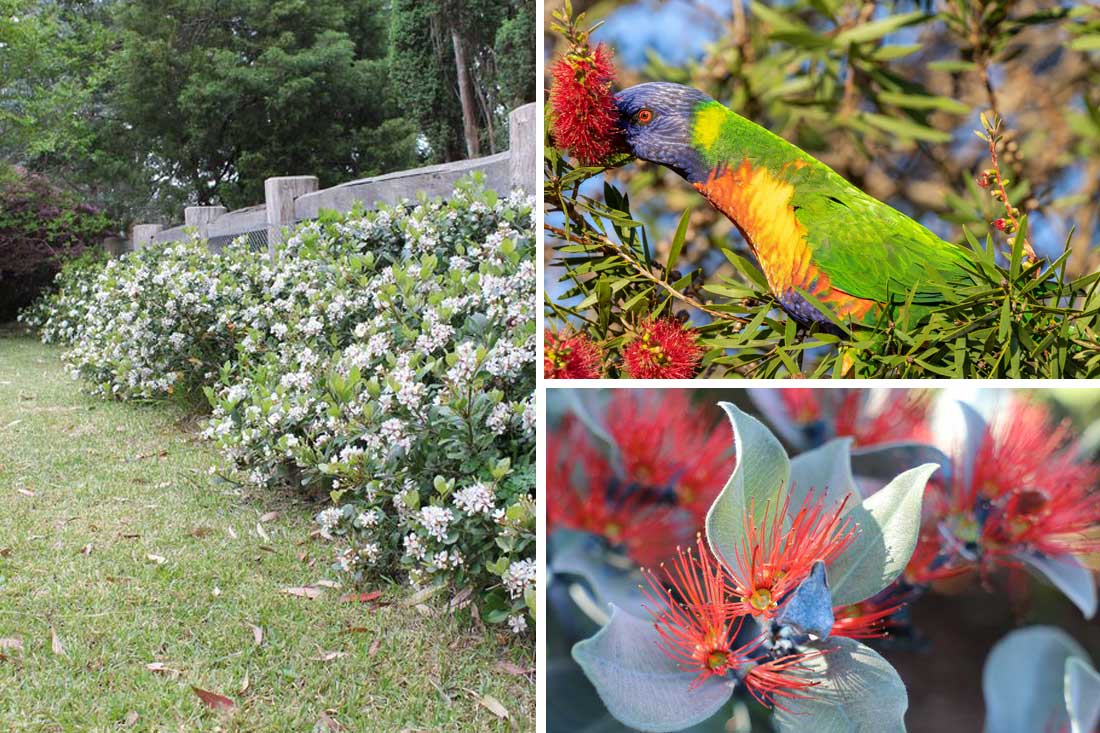When starting a new hedge, you may well succeed in creating a privacy screen simply by sticking a few matching plants into the ground nearby each other, but for a good hedge a little planning and preparation will go a long way. A hedge is usually part of a long term garden plan, and whatever the style of hedge, we usually expect them to last and look good for many years. Giving your hedge a good start will play an important role in setting your hedge up for a good future.
There are a number of considerations which are best assessed early in the process of creating a new hedge as they will help you make the best plant choice for the hedge.
These will include:
* How tall do you want the hedge to be? By choosing plants which grow to the approximate height you wish the hedge to be, you will save yourself significant pruning and maintenance.
* If your hedge is to be 3m tall or higher, will you be able to maintain it? Tall hedges are harder to reach to keep well pruned. You may be happy to have a less formal hedge to reduce the maintenance. Alternatively you may wish to further investigate hedge pruning options before you plant a hedge that will be out of reach. Either way, by choosing plants which only grow to the desired hedge height, be that 1m or 5m, you will greatly reduce the amount of pruning required to keep them from getting too large.
* Do you have sufficient space in that part of the garden to allow for the width of the hedge? Very narrow hedges can be difficult to maintain and difficult to keep looking dense all the way to ground level. You can find more information about hedge options for narrow spaces here.
* The style of your hedge will also influence your plant choices. Is your hedge to be formal or informal, flowering or edible? Follow the links to find more information regarding these hedge styles.
* What are your local climate and soil conditions and have you chosen plants which are suited to these conditions? Plants which are not suited to your local conditions will need significantly more care than those which are, and may fail to thrive regardless of how much care it is given.
Once the plant choice has been made, site preparation should be done with consideration of any specific requirements of your chosen plants.
Good soil preparation will assist all plants. Break up any hard clay or compacted soil to allow plant roots to penetrate. Add lots of organic matter in the form of compost, particularly if your soils are depleted, heavy clay or sandy. Once the hedge is planted, this area will not be dug over again for the foreseeable future, so doing a good job of it before planting can be very worthwhile.
By adding lots of organic matter in the form of compost and aged manures the soil structure can be improved allowing it to hold more water, nutrients and be more friable to allow roots to penetrate it more easily. This will allow the hedge plants to get a good head start and develop strong root systems which will in turn lead to a stronger hedge.
Organic fertiliser and or rock minerals can be added to the soil at this stage and dug through prior to planting.
The size of the plants you choose for your hedge may well be determined by budget and availability. Smaller plants are a cheaper option but will need more care initially to get them established. Larger plants can create a more significant presence at planting time however with care smaller plants will grow very quickly and often overtake the larger plants within a couple of years.
For assistance with spacing your hedge plants, you will find helpful information here.
When planting a hedge a good rule of thumb is to plant the plant to the same soil depth as it was in its pot. In very sandy soils or very dry environments it can be advisable to plant the plants deeper than in the pot to assist the roots to be in the deeper and cooler part of the soil. In heavy clay soils, it may be preferable to create planting mounds to prevent the roots being waterlogged. In this case the final soil level should be to the same depth as the plant was in the pot and the mound needs to be large enough to ensure the roots are well covered and not likely to be exposed by rain. Gypsum can be dug into some clay soils to improve drainage.
Check the plant roots when you remove it from the pot. If the roots are circling inside the pot it is considered to be pot bound. These circling roots will continue to grow in the same circle and will not spread into the soil, leading to a weak plant that often has a short life. Pot bound roots need to be teased out to ensure they are able to grow down into the soil during the planting process.
Once planted the new hedge will need to be mulched and watered well. Mulch will protect both the plant roots and the soil from excessive drying out and temperature extremes. Avoid fine mulches such as grass clippings as they will compact forming a crust which prevents water penetration.
A new planting will need a deep watering to ensure the soil profile is well watered to at least the depth of the entire root system. In very hot dry weather the plants may need to be watered every couple of days as they establish. In most situations a deep weekly watering is best to encourage deep rooted plants which ultimately will be stronger and healthier. For most plants watering can be reduced once they have survived their first dry season.
A little extra planning and preparation can result in a far stronger hedge which is both rewarding and significantly less maintenance than a poorly planted hedge. You will find further information on how to care for your newly established hedge here.
*Article published by Kate Wall

